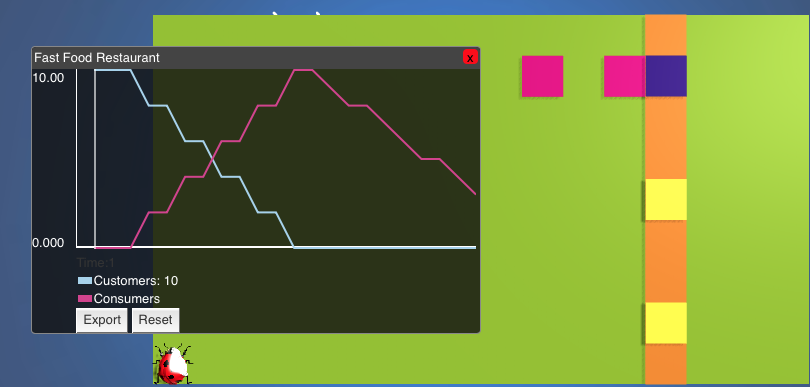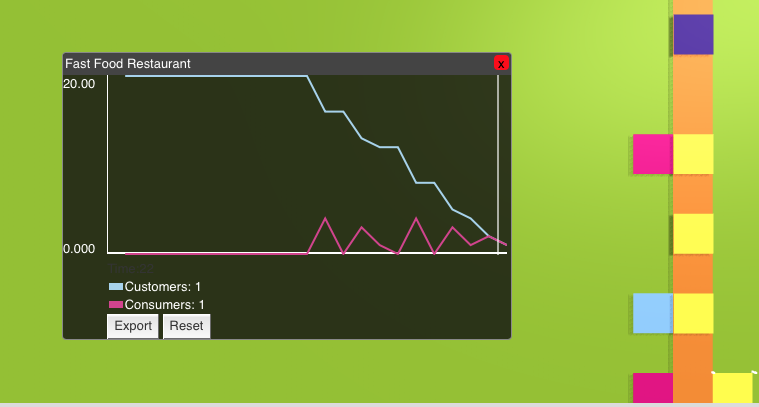Different Agents and Shapes
There is no software needed to download in order to run this program. Click here to see and run the model. There are 4 different agents in this Fast Food agent model: Cashier, Counter, Customer, and World. Each agent has either one or two shapes: Cashier has the shapes Cashier and the Pick-Up Cashier, the Counter's only shape is the Counter, the Customer's shapes are the Customer and the Consumer, and the World's shapes are the Order Table and the World.

Agent Model
After pressing "Run the Simulation" the blue squares, A.K.A. the customers will move toward the cashiers in a linear fashion. They will approach the cashier, or the yellow box, and "order their food." Ordering food is modeled as the customer waiting in front of the cashier for about 1 second, and then turning into a consumer, and going to the waiting line. The cashier takes the order, goes back to the "kitchen," and then goes back to the order table to take the next customer's order. Once all of the 10 customers' orders have been taken, the consumers (whom were all customers at one point) will move in a linear fashion towards the Pick-Up Cashier, modeled by the purple box. The consumer (pink box) will interact with the cashier, and wait for about 2.5 seconds before moving up, and out of the world. This models how the consumer gets the food, and then leaves the restaurant. All of this essentially shows how an average fast food restaurant functions in a certain time period.

Scaled Agent Model
After testing out the smaller scale agent model of fast food, we added more customers and cashiers to see how the graph would look, and how fast or efficiently the restaurant would function. If you press play on our 2nd world with a larger scale, the process is slightly slower, because we added many more customers, and only 1 more cashier. The graph reflects this, because over a long period of time, the number of customers and consumers slowly decreased.
